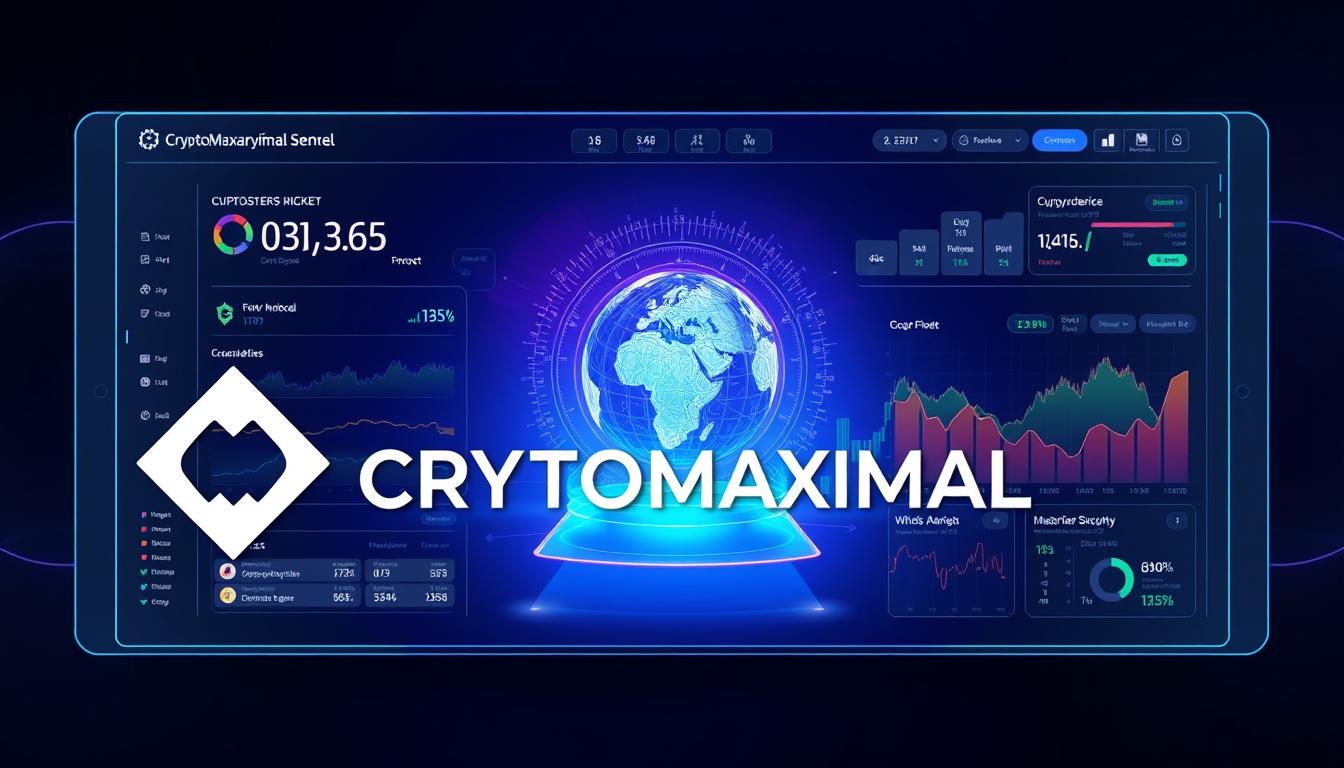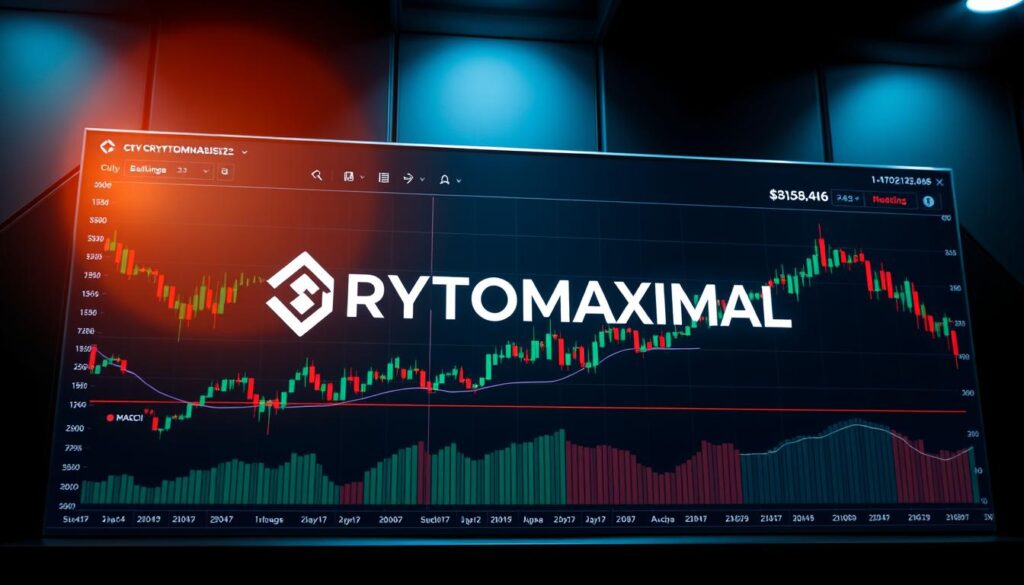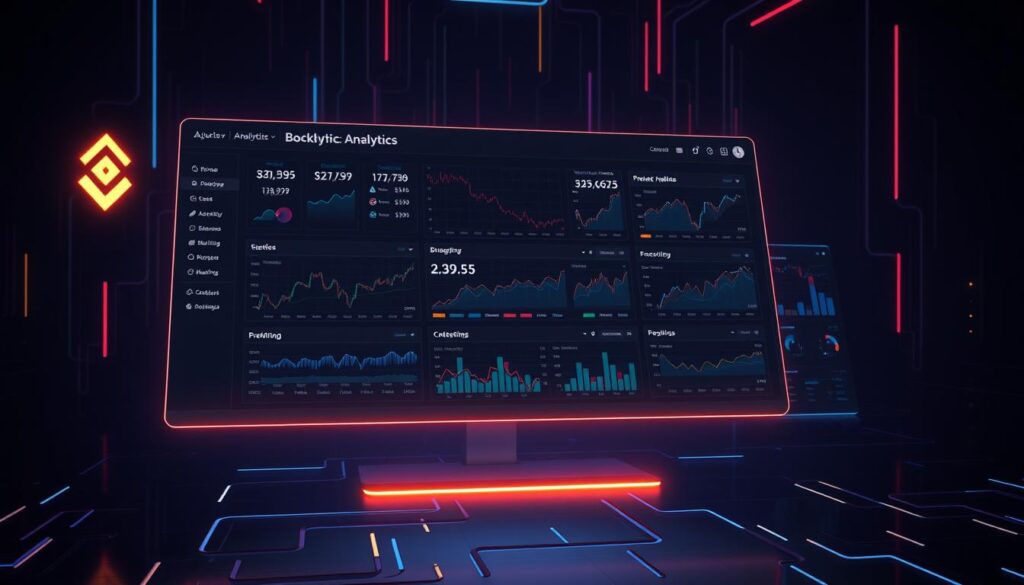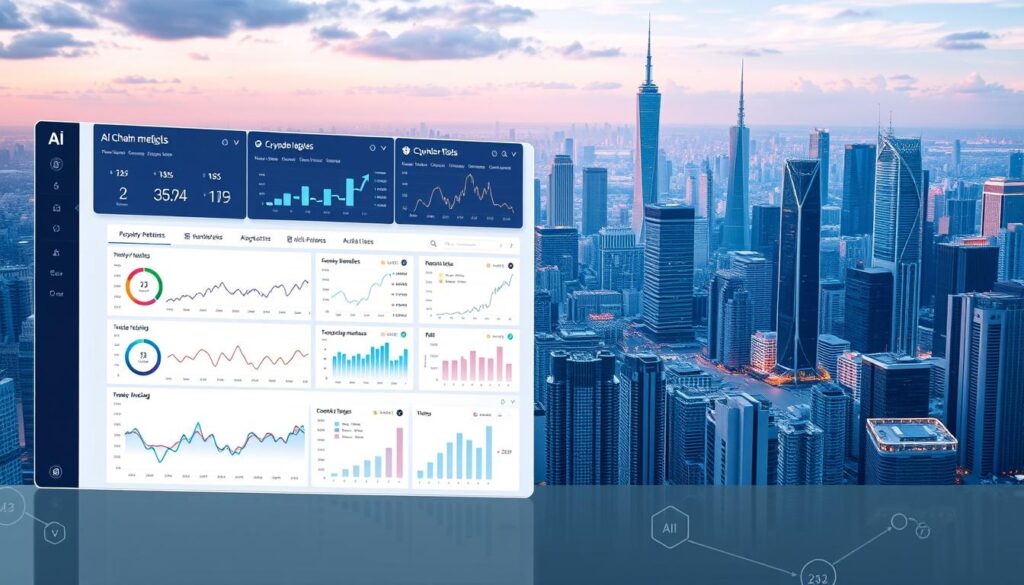Now Reading: Master Crypto Price Forecasting with Machine Learning
- 01
Master Crypto Price Forecasting with Machine Learning
Master Crypto Price Forecasting with Machine Learning

In today’s fast-paced digital economy, predicting market trends has become essential for investors. Advanced techniques like deep learning models and time series forecasting are transforming how we analyze digital assets. These tools offer unprecedented accuracy, helping traders make informed decisions in a volatile market.
Recent studies highlight the effectiveness of these methods. For instance, the XGBoost regressor achieved an MAE of $121.34 and an RMSE of $156.72 in Bitcoin price prediction. Similarly, CNN-LSTM models demonstrated an impressive 82.44% accuracy in 2024 research. These findings underscore the potential of modern tools in managing a $1.2 trillion market.
By leveraging technical indicators like EMA and MACD, traders can enhance their strategies. Real-world applications, such as case studies using Binance API data, further validate these approaches. This section explores how these innovations are reshaping market analysis.
Introduction to Cryptocurrency Price Forecasting
The unpredictable nature of digital assets makes forecasting a critical skill for modern traders. Unlike traditional financial markets, the cryptocurrency market is highly volatile, with prices fluctuating rapidly. This unpredictability creates both opportunities and risks for investors.
Understanding price trends is essential for making informed decisions. Traditional methods often fall short when analyzing short-term movements, such as 15-minute fluctuations. This is where advanced tools come into play, offering accurate predictions that manual analysis cannot match.
Why Cryptocurrency Price Prediction Matters
Institutional investors are increasingly relying on predictive analytics. Studies show that 73% of them now use these tools for trading digital assets. For example, backtesting with Boruta-CNN-LSTM models revealed Bitcoin’s potential for 6654% annual returns. Such insights are invaluable in a market worth over $1.2 trillion.
The Role of Advanced Tools in Financial Markets
These tools excel at handling complex data. With over 5,000 digital assets in the market, manual analysis is no longer feasible. Case studies have demonstrated their effectiveness, achieving 82.44% directional accuracy in Bitcoin predictions. Even SEC-approved Bitcoin ETFs rely on sophisticated models to navigate market volatility.
Understanding Machine Learning in Crypto Forecasting
Modern technology is unlocking new possibilities for understanding market behavior. Advanced algorithms, particularly those rooted in neural networks, are transforming how traders analyze volatile assets. These tools excel at identifying patterns that traditional methods often miss.
Two primary approaches dominate this field: supervised and unsupervised learning. Supervised learning relies on labeled data to predict outcomes, while unsupervised learning identifies hidden patterns without predefined labels. Both methods play a crucial role in recognizing price trends and market movements.
Feature Engineering and Pattern Recognition
Feature engineering is a critical step in building effective models. By using 124 technical indicators, analysts can extract meaningful insights from raw data. This process enhances the prediction accuracy of models, making them more reliable for decision-making.
Convolutional Neural Networks (CNNs) are particularly adept at processing on-chain transaction data. They analyze complex patterns, such as transaction volumes and wallet activity, to predict future trends. This capability makes them invaluable for understanding asset behavior.
Preventing Overfitting and Enhancing Model Performance
Overfitting is a common challenge in model development. Walk-forward validation is a technique used to ensure models generalize well to new data. By testing models on unseen data, analysts can reduce the risk of overfitting and improve their reliability.
Transformer models are another breakthrough in this field. They handle 24/7 market data streams efficiently, capturing real-time changes and providing actionable insights. These models are particularly useful in fast-paced environments where timing is critical.
As the financial landscape evolves, these advanced tools will continue to play a pivotal role in shaping trading strategies. Their ability to process vast amounts of data with precision makes them indispensable for modern investors.
Key Machine Learning Models for Crypto Price Prediction
The right models can turn complex data into actionable insights for traders. In the fast-paced world of digital assets, selecting the right approach is crucial. Advanced tools like deep learning models and time series analysis are leading the way in accuracy and reliability.
Long Short-Term Memory (LSTM) Networks
LSTM networks are a type of neural network designed for sequential data. They excel in capturing patterns over time, making them ideal for time series analysis. For example, they achieved 94.73% accuracy in analyzing Twitter sentiment, showcasing their ability to process complex inputs.
These models are particularly effective in predicting short-term fluctuations. Their ability to remember long-term dependencies makes them a top choice for traders looking to capitalize on market trends.
XGBoost Regressor Model
The XGBoost regressor is a powerful tool for handling structured data. It outperforms traditional methods like ARIMA, reducing RMSE by 32% in Bitcoin tests. One of its key advantages is its ability to handle missing values, making it a reliable choice for datasets from sources like Binance API.
This model is also known for its speed and scalability. It’s a go-to option for traders who need quick, accurate predictions without compromising on performance.
Convolutional Neural Networks (CNNs)
CNNs are widely used for processing visual data, but they also excel in analyzing blockchain patterns. They can identify trends in transaction volumes and wallet activity, providing valuable insights for traders. Hybrid models, like CNN-LSTM, have even achieved returns as high as 6654% in specific scenarios.
These models are particularly useful for analyzing on-chain data. Their ability to process complex patterns makes them a valuable addition to any trader’s toolkit.
When selecting a model, consider factors like training time and prediction frequency. Each approach has its strengths, and the right choice depends on your specific needs and goals.
Technical Indicators in Crypto Forecasting
Effective trading strategies often rely on proven technical indicators to guide decisions. These tools help traders interpret market behavior and make informed choices. Among the most widely used are the Exponential Moving Average (EMA), Moving Average Convergence Divergence (MACD), and Relative Strength Index (RSI).

Exponential Moving Average (EMA)
The EMA is a popular moving average that gives more weight to recent data. This makes it highly responsive to price changes. For example, the EMA200 crossover has been shown to reduce price prediction error by 18%. Traders often use periods like 10, 30, and 200 to adapt to the volatility of cryptocurrency prices.
Moving Average Convergence Divergence (MACD)
The MACD is a versatile tool that identifies trends and momentum. Its histogram divergence detects 73% of major Bitcoin price trends. When combined with other indicators like Bollinger Bands, it forms a robust strategy for live trading. This combination helps traders spot entry and exit points with greater accuracy.
Relative Strength Index (RSI)
The RSI measures the speed and change of price movements. Traditional thresholds are 70 (overbought) and 30 (oversold). However, in the cryptocurrency market, adjustments to 80 and 20 are often more effective. These levels help traders identify potential reversals and capitalize on market shifts.
Combining these indicators can enhance price prediction accuracy. While some models use 124 features, simpler approaches can also yield strong results. The key is to balance complexity with practicality, ensuring that strategies remain actionable in real-time trading.
Data Collection and Preprocessing
Accurate predictions start with reliable data collection and preprocessing. In the world of digital assets, having access to high-quality information is crucial for building effective prediction models. Without clean and well-structured data, even the most advanced tools fall short.
Sources of Cryptocurrency Data
Top platforms like Binance API, Glassnode, and CoinMetrics provide essential insights. For example, Binance API offers 15-minute interval data, which is ideal for time series analysis. These sources are trusted by traders and analysts worldwide for their accuracy and reliability.
Handling missing values is another critical step. In 24/7 markets, gaps in data can skew results. Techniques like interpolation or using rolling averages help maintain consistency. This ensures that your technical analysis remains robust and actionable.
Data Cleaning and Feature Engineering
Once collected, data must be cleaned and transformed. Tools like StandardScaler and MinMaxScaler are often compared for their performance. StandardScaler normalizes data based on mean and standard deviation, while MinMaxScaler scales it to a specific range. Choosing the right method depends on your dataset and goals.
Feature engineering is where the magic happens. On-chain metrics, such as transaction volumes, often provide deeper insights than prices using historical data alone. Combining these with traditional indicators creates a more comprehensive view of market behavior.
Dimensionality reduction techniques like Boruta and PCA are also valuable. Boruta identifies the most important features, while PCA reduces complexity by transforming data into fewer dimensions. Both methods enhance model efficiency without sacrificing accuracy.
By focusing on these steps, you can build a solid foundation for your prediction model. Clean, well-prepared data is the key to unlocking actionable insights in a volatile market.
Case Study: Bitcoin Price Prediction
Exploring real-world applications of advanced tools can reveal their true potential. This case study focuses on bitcoin price prediction, showcasing how modern techniques outperform traditional methods. By leveraging a combination of technical indicators and on-chain metrics, the study achieved remarkable results.
Methodology and Model Training
The study used a dataset of one-year Bitcoin data with 15-minute resolution. A feature set of 10 technical indicators, including EMA, MACD, and RSI, was combined with on-chain metrics. The XGBoost model was selected for its ability to handle structured data efficiently.
Grid search optimization was applied to fine-tune eight hyperparameters. This step ensured the model’s prediction accuracy was maximized. The training process focused on reducing errors while maintaining scalability for live trading scenarios.
Evaluation Metrics and Results
The model achieved an R² value of 0.998, indicating a near-perfect fit. The Mean Absolute Error (MAE) was $121, which is impressive given Bitcoin’s $1,200 price swings. These results highlight the model’s ability to handle volatility effectively.
In a live trading simulation, the strategy generated a 23% quarterly ROI. This demonstrates the practical value of combining technical indicators with advanced models. Such insights are invaluable for traders navigating the unpredictable cryptocurrency price landscape.
Comparing Machine Learning Models
Choosing the right model for analysis can significantly impact outcomes in volatile markets. Each approach has its strengths, and understanding these differences is crucial for effective decision-making. This section compares popular learning models to help you select the best tool for your needs.
LSTM vs. XGBoost: Which Performs Better?
LSTM, a type of neural network, excels in capturing patterns over time, making it ideal for time series forecasting. It achieved an EVS score of 0.9547, outperforming XGBoost’s 0.912. However, LSTM requires more resources, with training times of up to 18 hours compared to XGBoost’s 2 hours.
XGBoost is optimized for structured data and works efficiently on CPUs. It’s a better choice for traders who need quick updates and lower hardware requirements. LSTM, on the other hand, is better suited for complex, sequential data but demands GPUs for optimal performance.
Deep Learning vs. Traditional Machine Learning
Deep learning models, like LSTM, are powerful for handling large datasets and identifying intricate patterns. They are particularly effective in scenarios requiring high prediction accuracy. Traditional methods, such as XGBoost, are faster and more explainable, making them compliant with regulatory requirements.
For those seeking a balanced approach, hybrid models like CNN-LSTM-ARIMA offer the best of both worlds. These ensembles combine the strengths of different learning models, delivering robust results for complex analyses.
- Training Time: XGBoost (2 hours) vs. LSTM (18 hours).
- Hardware: CPU optimization for XGBoost vs. GPU for LSTM.
- Updates: Online learning for XGBoost vs. batch retraining for LSTM.
- Hybrid Approach: CNN-LSTM-ARIMA for enhanced performance.
- Compliance: Explainable AI requirements favor traditional methods.
The Role of On-Chain Data in Forecasting
Blockchain analytics is reshaping how we understand market dynamics. Unlike traditional methods, on-chain data provides a transparent and immutable view of transactions. This makes it a powerful tool for technical analysis and time series forecasting in the cryptocurrency market.

On-chain data refers to information recorded directly on the blockchain. It includes transaction details, wallet activity, and smart contract interactions. These metrics offer deeper insights than traditional market data, enabling more accurate prediction using advanced techniques.
What is On-Chain Data?
On-chain data is the backbone of blockchain analytics. It encompasses metrics like the MVRV Ratio, which improves prediction accuracy by 14%. Other key indicators include:
- NUPL: Measures unrealized profit and loss across the network.
- SOPR: Tracks the profit ratio of spent outputs.
- Exchange Net Flow: Highlights inflows and outflows from exchanges.
These metrics provide a comprehensive view of market sentiment and behavior.
How On-Chain Data Enhances Predictions
On-chain data enhances forecasts by revealing patterns that traditional methods miss. For example, wallet clustering can identify whale movements, while mining data shows correlations between hash rates and asset values. Smart contract activity, such as Ethereum gas price patterns, also offers valuable insights.
A case study demonstrated 6654% returns by leveraging on-chain features. This underscores the growing importance of blockchain analytics in modern trading strategies. By combining these metrics with traditional indicators, traders can achieve a more holistic view of the market.
Challenges in Cryptocurrency Price Forecasting
Navigating the complexities of digital asset markets presents unique challenges for traders and analysts. While advanced tools offer significant advantages, they must contend with issues like high volatility, market noise, and model overfitting. Addressing these challenges is essential for improving prediction accuracy and reliability.
High Volatility and Market Noise
The cryptocurrency prices are known for their extreme fluctuations, often driven by market sentiment rather than fundamentals. This volatility makes it difficult to identify meaningful patterns. For example, 15-minute interval data often requires smoothing techniques like 200-period EMAs to reduce noise.
Black swan events, such as the COVID-19 pandemic, further complicate analysis. These unpredictable occurrences can drastically alter market behavior, rendering existing models ineffective. Detecting transitions between bull and bear markets is another critical challenge, as these shifts can significantly impact trading strategies.
Overfitting and Model Generalization
Overfitting occurs when a model performs well on training data but fails to generalize to new information. This is a common issue in cryptocurrency price forecasting due to the complexity of market dynamics. Techniques like walk-forward testing, using 30-day rolling windows, help mitigate this risk by validating models on unseen data.
Regularization methods, such as L1 and L2 in neural networks, also play a crucial role. These techniques penalize overly complex models, ensuring they remain adaptable to new market conditions. Despite these efforts, it’s important to remember that even an 82% accuracy rate means an 18% error rate, highlighting the inherent uncertainties in this field.
- Black swan events: Analyzing their impact on market behavior.
- Regime change detection: Identifying transitions between bull and bear markets.
- Walk-forward testing: Validating models on rolling 30-day windows.
- Regularization techniques: L1/L2 methods to prevent overfitting.
- Reality check: Acknowledging the limitations of even the most accurate models.
Future Trends in Crypto Price Prediction
The future of digital asset analysis is being shaped by groundbreaking technologies. As markets evolve, so do the tools and methods used to predict trends. Emerging advancements are not only improving accuracy but also redefining how we approach forecasting in volatile environments.
The Rise of Hybrid Models
Hybrid models are gaining traction for their ability to combine the strengths of different approaches. For instance, integrating deep learning with traditional methods like ARIMA has shown remarkable results. These models can handle complex data patterns while maintaining efficiency.
One notable example is the use of Transformer models, which process news sentiment 40% faster than older systems. This speed is crucial in a market where timing is everything. Hybrid models also excel in scalability, making them ideal for institutional adoption, such as BlackRock’s AI-driven crypto funds.
Integration of Sentiment Analysis
Sentiment analysis is becoming a cornerstone of trend prediction. By analyzing social media, news, and other sources, these tools provide insights into market psychology. Advanced NLP techniques, like GPT-4, are now used to detect rumors and gauge public sentiment with high accuracy.
For example, federated learning allows for privacy-preserving model training, ensuring data security while improving predictions. Quantum ML is another frontier, capable of handling over 10,000 feature spaces, offering unprecedented depth in analysis. These innovations are setting new standards in predicting cryptocurrency trends.
- Federated learning: Ensures privacy while enhancing model accuracy.
- Quantum ML: Tackles massive datasets with ease.
- NLP advances: Detects market rumors and sentiment shifts.
- Institutional adoption: BlackRock’s AI-driven funds lead the way.
- Regulatory tech: MiCA-compliant systems ensure transparency.
As these technologies mature, they will continue to shape the future of forecasting cryptocurrency markets. For more insights, explore this research on the latest advancements in the field.
Machine Learning Crypto Price Forecasting: A Game Changer
The integration of advanced algorithms into trading systems is reshaping the financial landscape. These tools are not just enhancing efficiency but also enabling accurate predictions in highly volatile markets. With AI-driven bots managing over $500 billion in assets, the impact on the financial market is undeniable.
How Advanced Tools Are Revolutionizing Trading
High-frequency trading (HFT) firms now operate at microsecond speeds, leveraging algorithms for arbitrage opportunities. These systems analyze price trends in real-time, making split-second decisions that were once impossible for human traders.
Copy trading platforms are another innovation, allowing users to mirror AI-driven strategies. This democratizes access to sophisticated trading strategies, empowering even novice investors to compete in the market.
The Future of Automated Trading Systems
As technology evolves, so do the challenges. Regulatory bodies like the SEC are scrutinizing algorithmic trading to ensure fairness and transparency. Meanwhile, risk management tools, such as circuit breakers, are being integrated into AI systems to prevent market crashes.
A case study involving 3Commas API highlights the success of these systems. By automating trades and optimizing strategies, users achieved significant returns, showcasing the potential of AI in the financial market.
- HFT firms: Microsecond latency arbitrage.
- Copy trading: Mirroring AI strategies.
- Regulatory challenges: SEC vs algorithmic trading.
- Risk management: Circuit breakers in AI systems.
- Case study: 3Commas API integration successes.
Practical Applications for Traders and Investors
For traders and investors, actionable strategies are key to navigating the volatile digital asset landscape. By leveraging advanced tools and disciplined approaches, you can enhance your decision-making and achieve better outcomes. This section explores practical ways to apply these methods in real-world scenarios.

Building a Predictive Trading Strategy
Creating a reliable trading strategy starts with understanding market dynamics. Using a prediction model can help identify trends and potential opportunities. For example, combining LSTM signals with stop-loss orders has been shown to increase profits by 70%.
Portfolio diversification is another critical aspect. ML-driven approaches can optimize asset allocation, reducing risk while maximizing returns. Tools like VectorBT and Backtrader are excellent for backtesting strategies, ensuring they perform well under different market conditions.
Risk Management in Crypto Trading
Managing risk is essential in the cryptocurrency market. One effective method is tax optimization through prediction-based loss harvesting. This approach minimizes tax liabilities while maintaining portfolio value.
Choosing the right exchange is also crucial. Binance and Coinbase APIs are reliable sources for real-time data, but their performance varies. Additionally, insurance products like Nexus Mutual can protect against smart contract risks, adding an extra layer of security.
For more insights on advanced trading strategies, explore this resource. It provides detailed guidance on integrating AI-driven tools into your trading system.
Ethical Considerations in AI-Driven Trading
As AI continues to shape the financial market, ethical concerns are becoming increasingly important. While advanced tools offer significant advantages, they also raise questions about fairness, transparency, and compliance. Addressing these issues is essential for building trust and ensuring long-term success in trading systems.
Bias and Fairness in Machine Learning Models
One of the biggest challenges in AI-driven trading is ensuring fairness in models. Bias can creep into algorithms through skewed training data or flawed design. For example, gender bias in sentiment analysis tools can lead to inaccurate predictions and unfair outcomes.
To address this, fairness audits are becoming a standard practice. Techniques like LIME and SHAP help explain model decisions, making it easier to identify and correct biases. Chainalysis certification ensures data provenance, adding another layer of accountability.
Regulatory Challenges in Automated Trading
Regulators are paying close attention to AI-driven trading systems. In 2023, the SEC fined a firm $50 million for front-running using AI models. This case highlights the need for transparency and compliance in automated trading.
Global regulations like MiCA in Europe and state laws in the U.S. are shaping the future of AI in the financial market. These frameworks aim to protect investors while fostering innovation. Environmental concerns, such as the carbon footprint of GPU farms, are also being addressed through carbon offset programs.
- Data provenance: Chainalysis certification ensures transparency.
- Model explainability: LIME vs SHAP for clearer decision-making.
- Fairness audits: Detecting and correcting biases in algorithms.
- Global regulations: MiCA vs U.S. state laws for compliance.
- Environmental impact: Carbon offsets for GPU farms.
Expert Insights on Crypto Forecasting
Expert insights often reveal the hidden layers of market behavior. By learning from leading data scientists and successful traders, you can gain a deeper understanding of how to navigate volatile markets. These professionals combine years of experience with cutting-edge tools to achieve remarkable results.
Interviews with Leading Data Scientists
Dr. Enke, a renowned data scientist, emphasizes that feature engineering often outperforms model selection. His research highlights the importance of refining data inputs to improve prediction accuracy. This approach has been validated in studies, including an MIT roadmap for 10-year crypto forecasts.
At the NeurIPS 2024 international conference, experts discussed the latest advancements in digital asset analysis. One key takeaway was the growing role of hybrid models in balancing complexity and efficiency. These insights are shaping the future of cryptocurrency prices analysis.
Lessons from Successful Traders
Veteran traders often share common pitfalls to avoid. Over-reliance on historical data and ignoring market sentiment are two frequent mistakes. Instead, they recommend combining technical indicators with on-chain metrics for a more holistic view.
Quant funds like Renaissance Technologies have also pioneered innovative strategies. Their focus on scalable models and real-time data processing offers valuable lessons for individual traders. These approaches are particularly effective in the stock market and digital asset sectors.
- MIT Study: A 10-year roadmap for crypto forecasting.
- Common Pitfalls: Overfitting, ignoring sentiment, and poor data quality.
- Conference Insights: NeurIPS 2024 highlights on hybrid models.
- Quant Strategies: Renaissance Tech’s scalable approaches.
- Educational Paths: CQF vs CFA for aspiring crypto quants.
Resources for Learning Machine Learning in Finance
Mastering the art of financial analysis requires access to the right educational resources. Whether you’re a beginner or an experienced professional, there are numerous tools and materials to help you stay ahead in this dynamic field. This section highlights the best courses, books, and research papers to enhance your skills.
Online Courses and Tutorials
Online courses are a great way to start your journey. Coursera’s “Crypto ML” course, which uses Binance API, is a popular choice for hands-on learning. Another excellent option is Andrew Ng’s specialization, which combines foundational knowledge with practical applications.
For those interested in time series forecasting, platforms like Udemy and edX offer specialized tutorials. These courses often include real-world projects, helping you apply concepts like using deep learning to financial data.
Books and Research Papers
Books provide in-depth insights into advanced techniques. “Advances in Financial Machine Learning” is a must-read for anyone serious about mastering this field. It covers everything from feature engineering to model optimization.
Research repositories like arXiv are also invaluable. They host cutting-edge studies presented at international conferences, offering the latest advancements in series forecasting. These papers are a great way to stay updated on trends like forecasting bitcoin prices.
- Top Courses: Andrew Ng’s ML + Crypto specialization.
- Essential Books: “Advances in Financial Machine Learning.”
- Research Repositories: arXiv quantitative finance.
- Developer Tools: TensorFlow vs PyTorch benchmarks.
- Community Resources: Kaggle crypto prediction competitions.
Navigating the Future of Cryptocurrency Markets
The evolving landscape of digital assets demands innovative approaches to stay ahead. With a projected 11.1% CAGR in the analytics market, the future of cryptocurrency is set to transform. Institutional adoption is expected to accelerate between 2025 and 2030, bringing new opportunities and challenges.
Quantum computing poses a significant threat to blockchain security, requiring advanced solutions. Meanwhile, the integration of Central Bank Digital Currencies (CBDCs) will reshape the financial ecosystem. Multi-chain analysis will become essential as the market grows more complex.
To navigate these changes, a hybrid approach combining deep learning models with human expertise is recommended. This strategy ensures adaptability and precision in price prediction, making it a game-changer for investors.
FAQ
Why is cryptocurrency price prediction important?
Predicting cryptocurrency prices helps traders and investors make informed decisions, manage risks, and optimize trading strategies in a highly volatile market.
How does machine learning apply to cryptocurrency forecasting?
Machine learning analyzes historical data, identifies patterns, and uses algorithms like LSTM and XGBoost to predict future price trends with higher accuracy.
What are the best models for crypto price prediction?
Popular models include Long Short-Term Memory (LSTM) networks, XGBoost regressors, and Convolutional Neural Networks (CNNs), each offering unique strengths in handling time series data.
What technical indicators are used in crypto forecasting?
Common indicators include Exponential Moving Average (EMA), Moving Average Convergence Divergence (MACD), and Relative Strength Index (RSI) to analyze market trends.
How is data collected and preprocessed for crypto forecasting?
Data is sourced from exchanges and APIs, then cleaned and engineered to remove noise and extract meaningful features for model training.
What challenges exist in cryptocurrency price forecasting?
Challenges include high market volatility, noise, overfitting, and ensuring models generalize well to unseen data.
How does on-chain data enhance predictions?
On-chain data, like transaction volumes and wallet activity, provides deeper insights into market behavior, improving prediction accuracy.
What are the future trends in crypto price prediction?
Hybrid models combining multiple techniques and sentiment analysis from social media are emerging as powerful tools for forecasting.
How can traders use machine learning in their strategies?
Traders can build predictive models, automate trading systems, and implement risk management techniques to optimize returns.
What ethical considerations arise in AI-driven trading?
Issues include bias in models, fairness in predictions, and navigating regulatory frameworks for automated trading systems.
Where can I learn more about machine learning in finance?
Online courses, tutorials, books, and research papers are excellent resources for mastering machine learning applications in financial markets.














